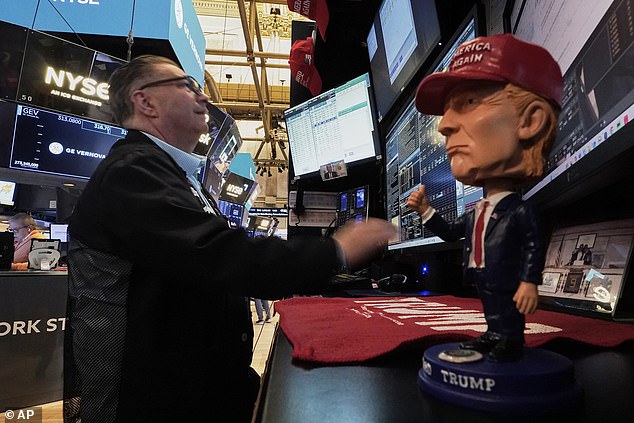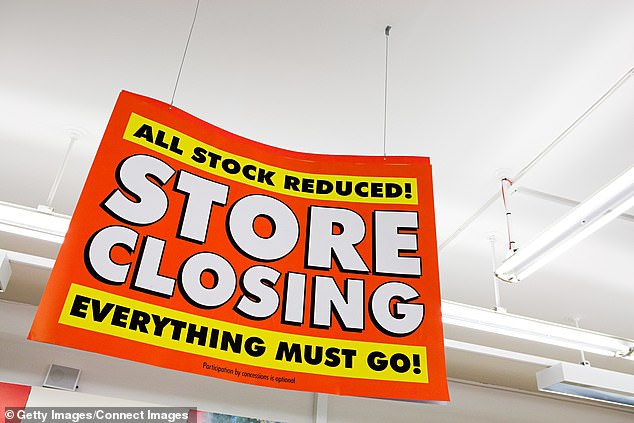America’s economy produced less than expected to start the year.
The US economy shrank at a 0.5 percent annual pace from January through March, the Commerce Department reported Thursday.
It was an unexpected downgrade from its previous estimate of 0.2 percent.
First-quarter growth sank under a surge of imports as companies in the United States rushed to bring in foreign goods before Trump could impose tariffs on them.
It’s ‘another challenge for a day where there’s a lot of moving parts,’ Bret Kenwell, a US investment analyst at eToro, told DailyMail.com.
‘A bumpy import/export number was expected, but the bigger concern is consumer spending.’
Consumer spending slowed sharply, expanding just 0.5 percent.
In the last quarter of the Biden administration, the economy was producing at a robust 4 percent clip.

The US economy produced at a slower clip than previously expected, new federal numbers show
The first three months of 2025 also saw a deep cut in US production.
A January through March drop in gross domestic product — the nation’s output of goods and services — reversed a 2.4 percent increase in the last three months of 2024 and marked the first time in three years that product outflows contracted.
Imports expanded 37.9 percent, the fastest since 2020, and pushed GDP down by nearly 4.7 percentage points.
A category within the GDP data that measures the economy’s underlying strength rose at a 1.9 percent annual rate from January through March, down from 2.9 percent in the fourth quarter of 2024.
This category includes consumer spending and private investment but excludes volatile items like exports, inventories, and government spending.
And federal government spending fell at a 4.6 percent annual pace, the biggest drop since 2022.
Trade deficits reduce GDP. But that’s just a matter of mathematics.
GDP is supposed to count only what’s produced domestically, not stuff that comes in from abroad.

America is one bad quarterly economic reading away from a technical recession – but investors and economists aren’t as worried about the next reading

American consumer spending cooled further than expected, federal economists found
So imports — which show up in the GDP report as consumer spending or business investment — have to be subtracted out to keep them from artificially inflating domestic production.
The first-quarter import influx likely won’t be repeated in the April-June quarter and therefore shouldn’t weigh on GDP.
In fact, economists expect second-quarter growth to bounce back to 3 percent in the second quarter, according to a survey of forecasters by the data firm FactSet.
The first look at April-June GDP growth is due July 30. If the quarter shows an unlikely GDP downfall, the US will be in a recession.
Investors have also remained skeptical about America’s economic downfall.
This week, major Wall Street indexes hit record highs, as an inflow of cash keeps pumping through the economy.
‘Stocks are still hovering near record highs as tech continues to lead the rebound on Wall Street,’ Kenwell said.
‘Investors want to see two things come out of the second quarter: Better-than-expected earnings growth and a rebound to positive annualized GDP growth.
‘If the latter is achieved, the US will avoid the technical definition of a recession.’
Share or comment on this article:
The ominous warning of poor economic health as Trump’s tariffs loom